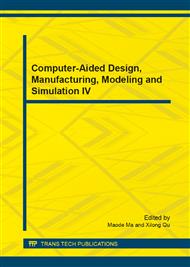p.151
p.155
p.160
p.165
p.170
p.175
p.181
p.186
p.191
Acquisition System Construction of Travel Information Based on Wireless Sensor Network
Abstract:
At present, while pursuit the spiritual enjoyment, attention has gradually paid to the tourism and tourism industry has developed very rapidly. But at the same time, the rapid development of the tourism industry also brings the problem of ecological environment protection, which is become increasingly outstanding contradiction. All sectors of the community is generally pay close attention to the tourism environment problems, and regard it as a hot spot for research. However, low-carbon tourism concept, the interaction principle of development of tourism activities and tourism environment protection, need from a holistic perspective to do the evaluation research. This paper based on DPSIR model, introduced low-carbon concept into the development of tourism industry, combined with the basic theory of low-carbon tourism, and constructed the development model of low-carbon tourism industry, combined with the actual tourist attractions for empirical research, to make more favorable exploration on direction and way of tourism to achieve low-carbon sustainable development.
Info:
Periodical:
Pages:
170-174
Citation:
Online since:
October 2014
Authors:
Price:
Сopyright:
© 2014 Trans Tech Publications Ltd. All Rights Reserved
Share:
Citation:


